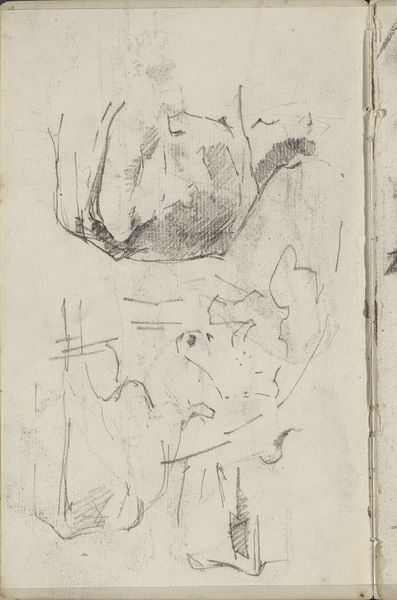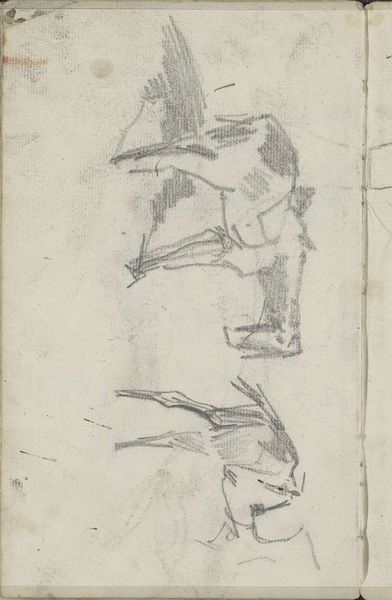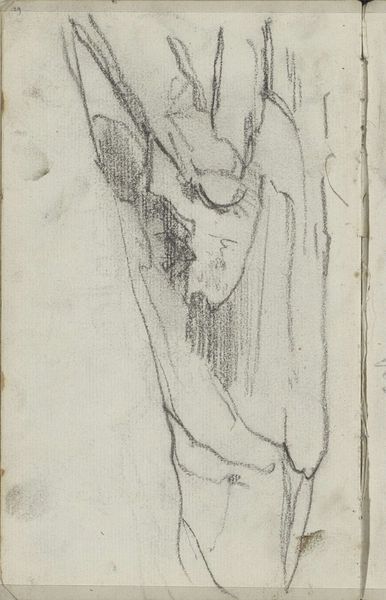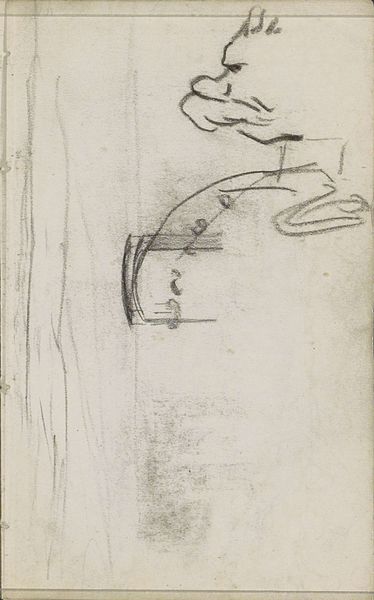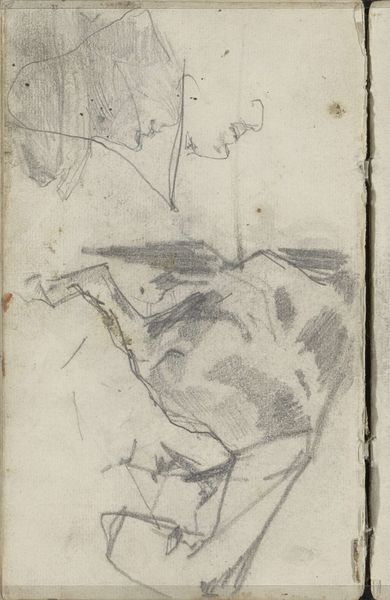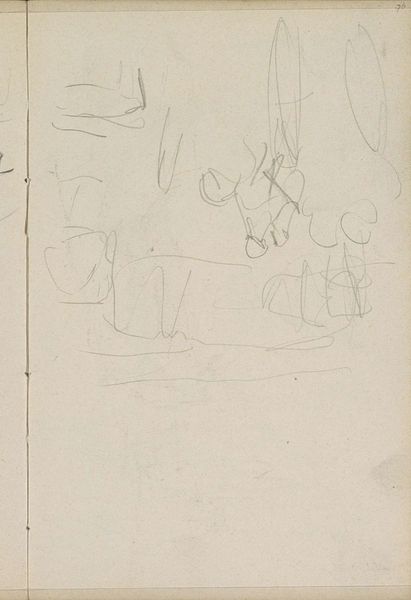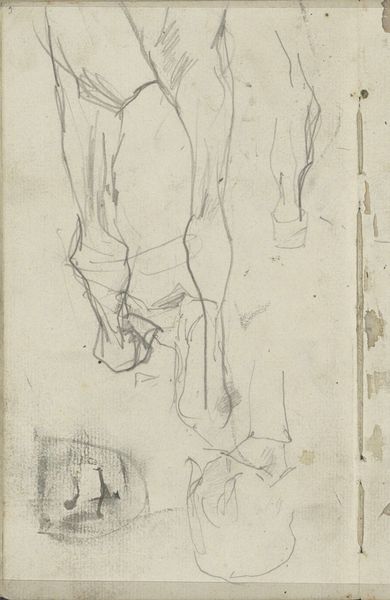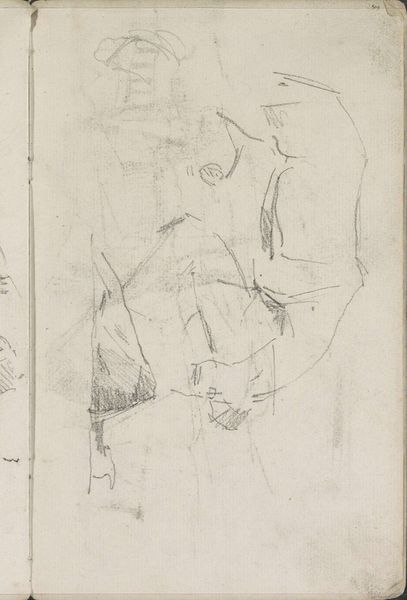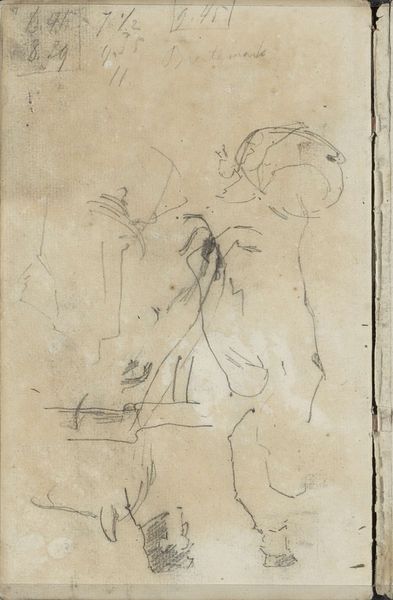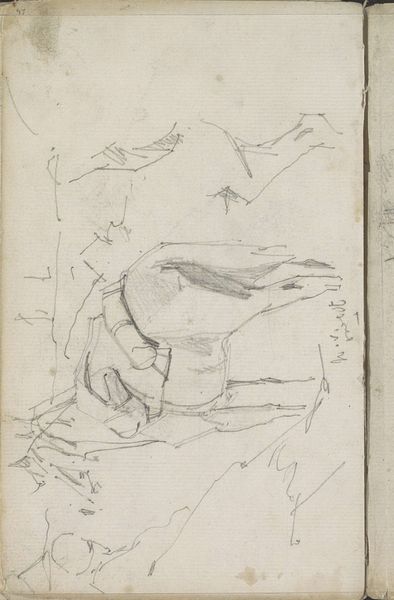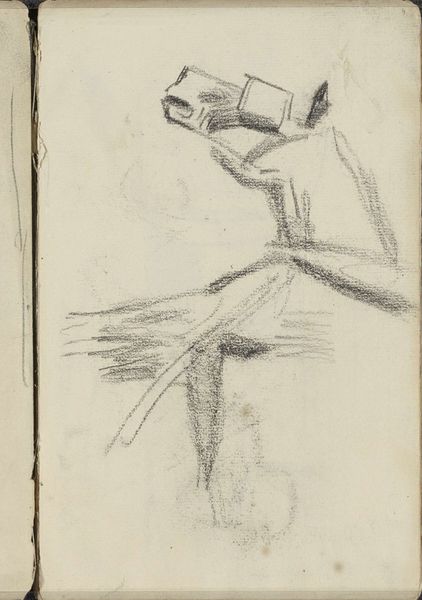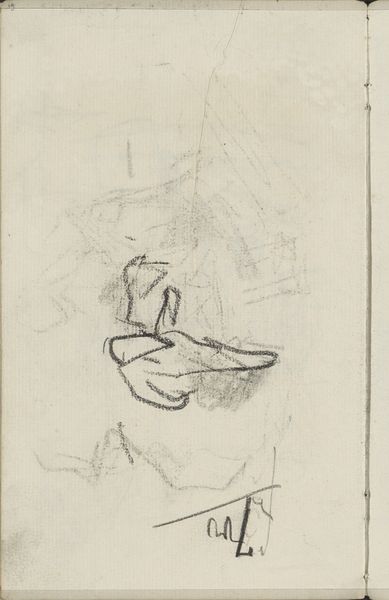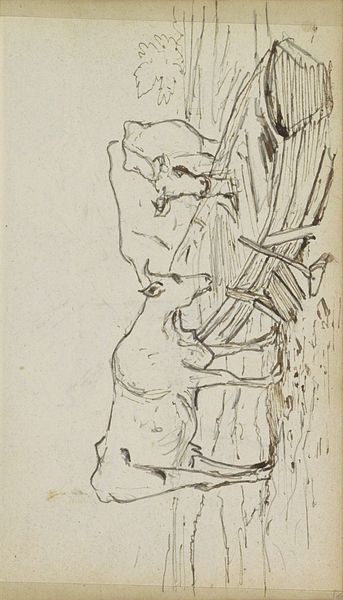
drawing, paper, pencil
#
drawing
#
amateur sketch
#
light pencil work
#
quirky sketch
#
impressionism
#
landscape
#
paper
#
personal sketchbook
#
idea generation sketch
#
sketchwork
#
detailed observational sketch
#
pencil
#
sketchbook drawing
#
sketchbook art
#
initial sketch
Copyright: Rijks Museum: Open Domain
Editor: This is George Hendrik Breitner's "Kudde in een landschap," created between 1881 and 1883. It’s a pencil drawing on paper, currently at the Rijksmuseum. I find the sketchiness really intriguing – it feels like a fleeting glimpse of something. What do you see in this piece, beyond the immediate depiction of a herd of animals in a landscape? Curator: I see Breitner engaging with the raw materials of artistic production. Look at the paper – its texture, perhaps even its imperfections. The pencil work itself, the very act of sketching, becomes central. This isn’t about illusionistic representation, but about documenting the process. It highlights the labor of the artist, the choices made in each stroke. Where did Breitner source his paper? Who manufactured his pencils? Editor: That's a very different way of looking at it! I was focused on trying to decipher the scene. So, you're less interested in the 'what' and more in the 'how' and 'why'? Curator: Precisely. The 'what' is a secondary concern. Consider the social context: Breitner was working at a time when rapid industrialization was changing the landscape itself. How did the mechanization of paper production, for example, impact the availability and cost of art materials? This sketch offers a material trace of that historical moment. What relationship do you think exists between the burgeoning industries in Amsterdam and Breitner’s art? Editor: I never really considered it that way. Perhaps his choice of readily available materials was a commentary on the changing landscape. Something like…art embracing industrialization? Curator: It's more complex than simple embracement, I believe. It shows us how even a fleeting sketch connects to broader forces of labor, materiality, and even consumption. The drawing then isn't just an observation, but evidence. Editor: So, it’s not just a landscape study, it’s also a record of the materials and social forces that made it possible. Thanks! I am seeing the artistic value of ordinary work. Curator: Precisely! Examining the art materials leads us down many more productive paths.
Comments
No comments
Be the first to comment and join the conversation on the ultimate creative platform.
